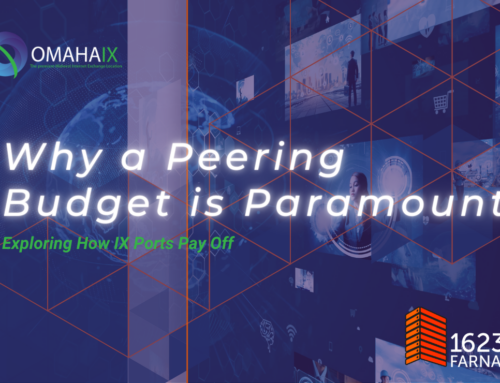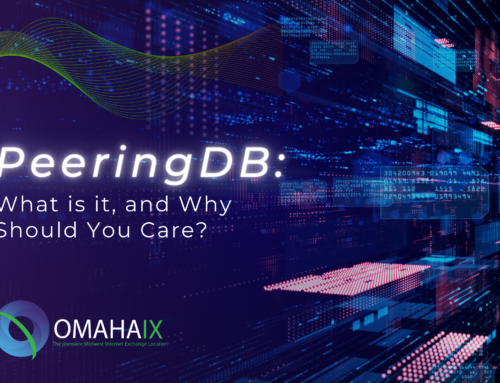The Panama Canal, opened in 1914, is an engineering and logistical feat that remains a marvel to this day. Through a series of locks, shipping vessels can traverse the Central American country from the Pacific Ocean to the Atlantic in only eight to 10 hours, eliminating the costly, time-consuming and potentially treacherous journey through the Cape Horn route around South America’s southern tip. This direct connection between oceans revolutionized the global economy and continues to play a major role in shipping to this day.
So…why are we talking about it here?
The concept of leveraging a direct connection is just as relevant to businesses today as it was to merchants over a century ago — the only change is that today’s direct routes look a lot different. In fact, much of the time you can’t really see them at all, but the advantages are still plain.
The Quest for Quick Connectivity Hops
Digital transformation has made optimized networking and connectivity essential for success. Organizations that don’t properly procure and manage connectivity are often putting their ever-important traffic in the hands of third-party transit providers, who may send the data to the other end of the country before it arrives at its intended destination. Just as you would want to avoid sending precious cargo around the southernmost point in South America, you want your traffic taking the most direct route to its destination to minimize latency and ensure the safest, most efficient (and most cost-effective) transmission. So, what is the digital connectivity equivalent of traversing the Panama Canal? If you know anything about us, you know we’re about to say one word: Peering.
When two independent networks directly connect in an IX to exchange traffic, they get better performance, more convenient access to far-reaching, geographically diverse pathways and increased control over their traffic. Just as there is a charge for accessing the Panama Canal’s locks, peering comes with the upfront cost of buying a port at an IX — but it’s an investment that can more than pay for itself. Here are three benefits of peering that also save money.
- Keep Customers Happy
While there is a cost for robust connectivity, there are also costs that come with poor connectivity. People have come to expect on-demand services in virtually all aspects of their life, and businesses will be unable to hang on to customers who become frustrated with poor connectivity. What’s more, revenue lost from disillusioned former customers can be compounded by the impacts of developing a poor reputation. In other words, the customers you lost will discourage others from signing up for your services. Likewise, a good reputation can help drum up more business.
The enhanced network performance that peering guarantees translates into an enhanced user experience. Reducing the distance between the data source and destination leads to faster data transmission times, positively impacting a range of online activity. Gamers experience lower lag and smoother gameplay, video streaming services deliver content with minimal buffering, and real-time applications are more responsive. High customer satisfaction directly translates into fewer trouble tickets — and the cost of fielding calls, troubleshooting solutions and potentially dispatching staff to fix a problem should never be underestimated.
- Better Control of Transit Costs
Like we mentioned above, outmoded methods of delivering all your traffic involved third-party transit providers and upstream connectivity partners, making outsiders the arbiters of how data was delivered. Now, by exchanging traffic directly, networks can control their traffic while more efficiently managing transit providers and their associated fees. Controlling those costs can add up into massive savings quickly, especially for networks with significant traffic. In addition to eliminating fees, peering also leads to improved overall efficiency, allowing network operators to optimize infrastructure and reduce management expenses.
- Future-Proof Operations
Digital transformations are accelerating, and with that will be higher demand for greater connectivity. New and exciting technologies are expected to have a significant effect across industries. These include machine learning and AI-based decision-making; intelligent operations and real-time data; and the Internet of Things (IoT). Any one of these can be leveraged to increase efficiency, among a myriad other money-saving applications. That’s not to mention the revenue-increasing potential they hold. Some technologies may have more applications in certain industries than others, but there’s no doubt the impacts will be universally felt across verticals. Exciting news, yes, but it’s impossible to truly unlock the power behind these technologies without optimized networking and connectivity enabled by peering.
Dollars and Sense
Budgeting for IT is an important part of every business strategy. New investments should not be taken lightly, especially as IT costs continue to increase. After all, Gartner expects global IT spending to grow to $4.6 trillion by the end of this year. At OmahaIX, we are keenly aware of the deliberations businesses must go through when allocating limited resources.
That’s why we developed an eBook showing the cost of purchasing one of our ports housed in the carrier-neutral data center 1623 Farnam — and how that measures up against real-life examples of the financial benefits of peering. Check it out and see if a port is right for your business.



